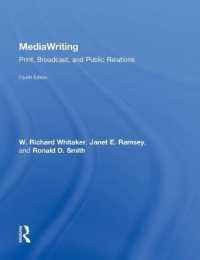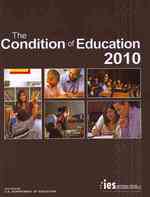Full Description
Establishing the unique opportunities and characteristics of doing research in publishing and book studies, this book demonstrates and evaluates the range of research methods that are available to students when conducting research within the field.
Organized into three main parts, prefaced by a general introduction to the discipline, Research Methods in Publishing and Book Studies considers qualitative and quantitative methods and methods of data analysis in turn. Each chapter within these sections features:
Details and logistics of the research method, including specific ethical considerations, disciplinary history, and distinguishing features when compared to other methods.
Advantages and disadvantages of the method, helping students evaluate and choose the right method for their research.
A case study of the Method in Action, written by featured authors with expertise in that area.
Study questions to help readers test and solidify their knowledge.
Further reading suggestions.
By the end of the book, students will have a sound understanding of the methods commonly used in book and publishing studies and will be able to confidently identify and select methods for their own research projects and dissertations.
This book is an essential resource for advanced undergraduate and postgraduate students and researchers in book and publishing studies.
Contents
Acknowledgments
Introduction
1. Foundations of Publishing and Book Studies Research
Part I: Qualitative Methods
2. Archival Methods
3. Oral Histories
4. Interviews
5. Focus Groups
6. Case Studies
7. Ethnography, Netnography, and Autoethnography
Part II: Quantitative Methods
8. Surveys
9. Corpora
10. Datasets
Interlude: Social Media Research
Part III: Data Analysis
11. Content Analysis, Discourse Analysis, and Thematic Coding
12. Descriptive Statistics
13. Social Network Analysis
Coda: Mix and Match: Multi-Method and Mixed-Method Research in Publishing and Book Studies
Conclusion: The Future of Publishing and Book Studies Research
Index








